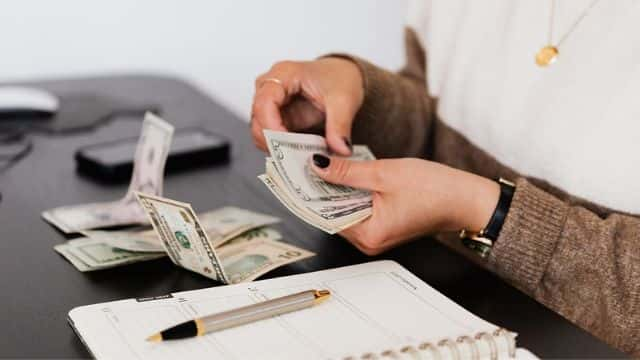With the likelihood of any additional federal stimulus checks dwindling, more states are stepping up to support their citizens at a time when they require assistance just as much as they did during the pandemic.
18 states now provide residents with inflation relief payments, and the majority of them will begin doing so in the third quarter of 2022.
Thanks to the $5 trillion flood of financial aid, which was largely distributed to Americans directly in the form of stimulus checks, Americans were able to survive the pandemic.
A variety of other measures were taken for businesses, states, cities, local government units, tribal organizations, and other pandemic-affected groups. This was dispersed over two years, covering the pandemic and its effects.
Through three rounds of direct stimulus payments, the extended unemployment payment, and the enhanced Child Tax Credit stimulus payments, over $1 trillion found its way into the personal accounts of low- and moderate-income groups.
Through improvement initiatives like SNAP, billions benefited Americans indirectly.
Having money in their hands to put food on the table, pay debts and instalments, and stay current with loan and credit card instalment payments helped people avoid a recession during the pandemic’s peak.
By the third stimulus check, more people had extra cash on hand, which increased their spending as citizens.
More goods were in demand as a result of this rise in demand than the businesses could produce at the time.
As a result of the pandemic, the economy was still recovering, and a sizable number of people had not yet started working.
The fear of social contact so soon after the pandemic was a bigger factor in the labour shortage. People were also comfortable financially, so there was no immediate need to work to support their families.
Even after supporting their families, eliminating high-interest debts like credit card debt, and even managing to invest some of their savings in stocks and other investment vehicles.
Although the American economy experienced a brief boom that lasted the entire year of 2021, the euphoria of the stimulus checks quickly subsided and gave way to slow-moving inflation that began in the third quarter.
The Stimulus Checks Contributed To The Inflation Feel, According to Experts

An inevitable and common consequence of economic growth is inflation. More workers are needed as a result of business expansion.
This causes the unemployment rate to decline, and as a result, households have more money on hand to spend. Naturally, this raises consumer demand for both services and goods. And this causes prices to go up.
As businesses struggled to keep up with production, prices soon started to rise and there was a lull in supply.
They failed in that regard because demand was too great and there was an abundance of cash on hand.
As Russia, the third-largest producer of petroleum products in the world, cut off supplies due to the war in Europe, things became more complicated.
The price of gasoline and related products was immediately impacted, and the impact was felt across industries.
The effects of the pandemic on the economy were neither normal nor natural, and it is expected that the inflation rate of 8.3 per cent, which has been stubbornly holding steady at a 40-year high for roughly three quarters, will gradually decline as well.
Therefore, there is no question that the pandemic contributed to a portion of the record inflation rise.
The American economy has experienced inflation that is significantly higher than the rest of the world’s, despite the pressures that have been placed on the global economy.
While the developed nations of the European Union and the United Kingdom saw figures circling around the 5 to 6 per cent range, it was significantly higher for the US with figures circling around the 8.5 to 9.1 per cent range.
The difference has been attributed to stimulus checks by economists. The most accurate estimate came from the San Francisco Federal Reserve Bank, which predicted that by March 2022, the government stimulus check may have increased inflation by about 3 percentage points nationwide.
Low and moderate-income workers are now back in the same situation they were in immediately following the pandemic, before the announcement of the stimulus checks, as a result of the inflation continuing at a very high level for the past three quarters.
The number of states has risen to about 18 as more states move in to assist their citizens. The distribution of stimulus checks to locals has already begun in Maine and New Mexico.
Maine has been the most giving of the states, sending individual tax filers $850 stimulus checks. If the income of married couples filing jointly is within the established eligibility limit, they will receive twice that amount.
Republican-ruled Florida is the most recent state to announce stimulus payments for a limited number of families. For each child that leaves this week, approximately 60,000 residents will receive a $450 stimulus check.
By the third quarter of 2021, Californians should also start receiving their stimulus payments. A stimulus check will be distributed to roughly 23 million Californians, according to governor Gavin Newsom’s ambitious plan.
The governor has approved several measures, including a $17 billion inflation relief package, the suspension of the sales tax on diesel, and financial aid for utility bills and rent.
Read more:-
- Amid a Forthcoming Healthcare Spin-off, 3M Follows a Growing Trend
- Visit by Pelosi to Taiwan: Beijing Threatens Repercussions if Us Officials Visit the Island
- The Real Story Behind John Roberts’ Failure to Protect Abortion Rights
The stimulus check, which is based on a three-tier system of payments of $350, $250, and $200, depending on the beneficiaries’ income, will benefit more than half of the state’s residents and could reach as high as 1,050.
Colorado will send a cashback rebate of $750 for individual taxpayers and twice that amount for couples filing jointly. Other states have also announced stimulus checks.
To receive direct payments, Governor Jared Polis has urged citizens to file their returns by June or request an extension by October 17. However, this will cause the stimulus check to be delayed, and payments will only begin in January 2023.


